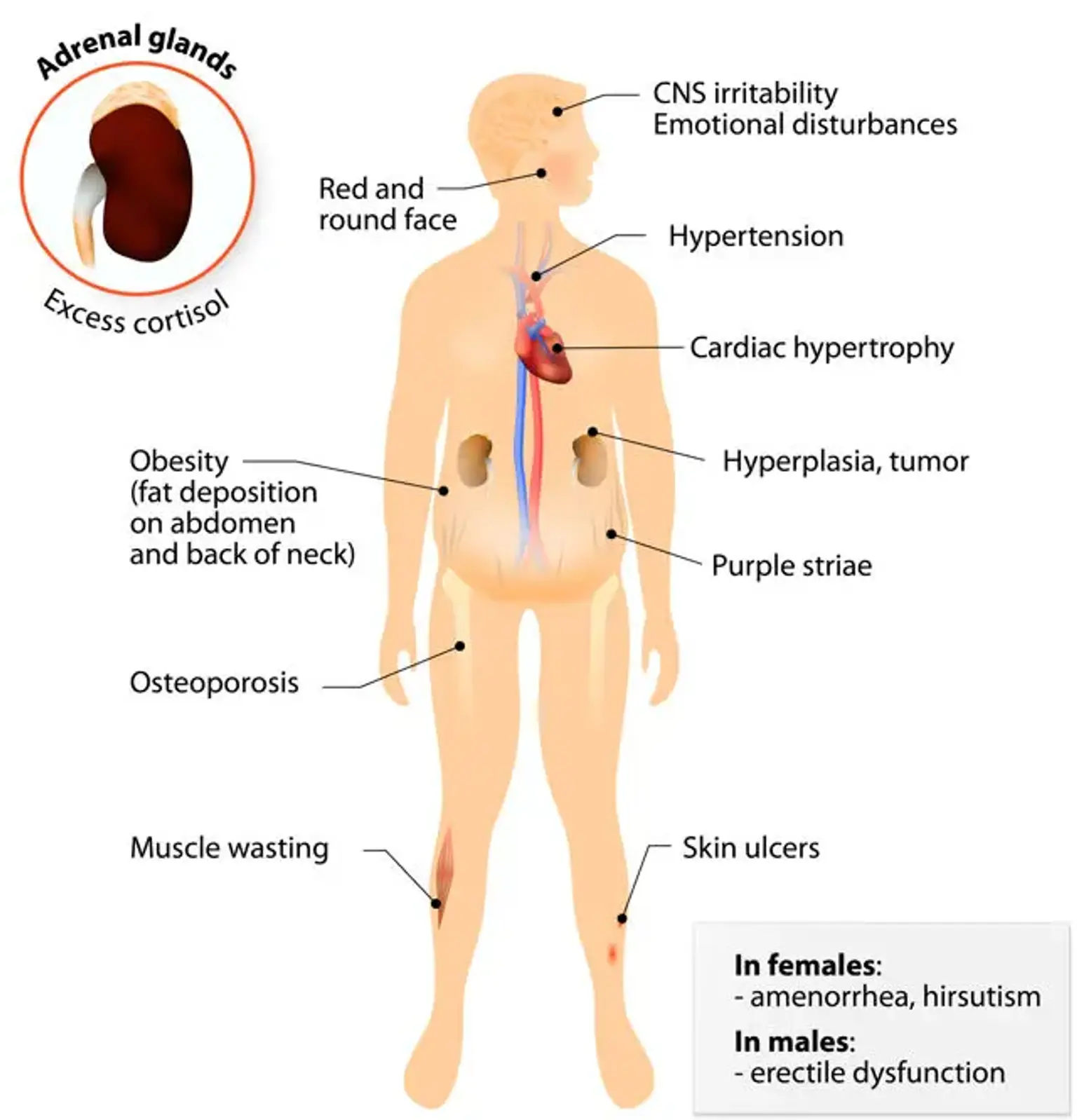Cushing's syndrome
Cushing’s syndrome develops when the body produces too much cortisol hormone with time. This is a side effect of taking oral corticosteroids. Alternatively, the body may as well create too much cortisol.
A fatty hump located between the shoulders, a round face, and purple or pink stretch marks on the skin are some of the typical indications of Cushing’s syndrome caused by a lot of cortisol. On the other hand, Cushing’s syndrome can cause bone loss, high blood pressure, and type 2 diabetes for some people. Cushing’s syndrome treatments can help you regain control of the cortisol levels and relieve the symptoms. The sooner you begin treatment, the higher your chances of recovering.
Signs and Symptoms of Cushing’s syndrome
